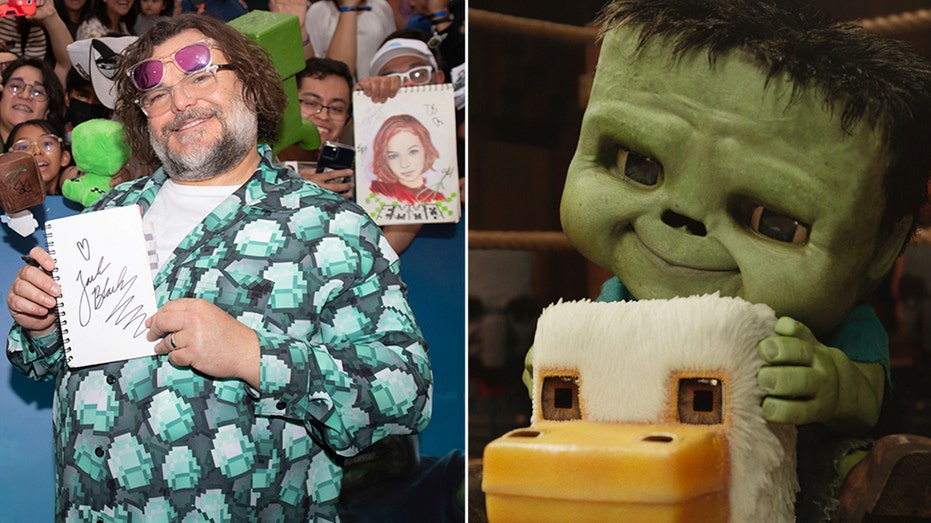The anticipated arrival of the ‘Minecraft’ movie has spurred both excitement and apprehension among parents, educators, and psychologists across the United States. As the film gears up for its release, experts have started expressing their concerns regarding its potential effects on young audiences. With ‘Minecraft’ being a globally popular video game that allows players to explore and craft their own worlds, the movie adaptation brings with it both a significant cultural milestone and the potential for unforeseen negative consequences.
By drawing in millions of dedicated fans, the ‘Minecraft’ franchise has created a massive following. The game itself promotes creativity, exploration, and problem-solving among players. However, with the transition from game to film, scholars are warning that there may be unintended outcomes that could influence the youth in negative ways. Critics argue that while the movie might engage children in the Minecraft universe, it could also perpetuate undesirable behaviors or attitudes that are detrimental to societal norms.
Emilia Thompson, a child psychologist with over a decade of experience working with youth, highlighted some of these concerns. “The film does not merely represent entertainment; it holds the potential to shape attitudes and behaviors,” Thompson stated. “Children are impressionable, and what they see in popular media becomes a part of their understanding of the world. While the game encourages creativity, the movie may inadvertently lead to a glorification of conflict, destruction, and intolerance in its portrayal of various characters and themes.”
Moreover, parents are worried about the film’s capacity to truly resonate with youthful audiences. “Kids will want to mimic what they see. If the movie shows characters using violence or intimidation to resolve conflicts, children may internalize that behavior as acceptable,” voiced Rachel Adams, a concerned parent of two children aged 8 and 10. “It’s crucial for media aimed at youth to provide constructive messages that encourage positive interpersonal skills, rather than celebrating dysfunctional behaviors.”
Another point of concern arises from the potential commercialization of youth culture that the ‘Minecraft’ movie may exacerbate. With a multitude of merchandise, from toys to clothing to video game extensions all tied to the film, many believe cinema and gaming are colliding to create hyper-commercialized content targeted at impressionable youth. “This competition for kids’ attention creates a cycle that prioritizes consumption over critical thinking and creativity,” noted Mark Johnson, a media literacy expert.
While one of the ‘Minecraft’ movie’s distinguishing characteristics is its vibrant animation and world-building, the substance of its narrative is crucial. Experts recommend that parents and guardians remain vigilant. “It’s important for families to watch the film together, discussing the themes and characters, to provide real-world context,” said Thompson. “Conversational engagement after the movie can help children process what they have seen, allowing for the development of discernment.”
However, not all reactions have been negative. Some child development specialists believe that depictions of teamwork, problem-solving, and friendship showcased in the film could serve as valuable life lessons. “If the film emphasizes collaboration in overcoming obstacles, then it could be a positive experience for children. The context in which elements from the game are presented matters greatly,” remarked Dr. Lisa Band, a child development researcher.
Public anxieties don’t just stem from the movie’s potential influence on behavior. With youth mental health concerns on the rise in America, particularly during the COVID-19 pandemic, some argue that movies, like the upcoming ‘Minecraft’ feature, can spur reflections on youth identity and resilience. While foundational qualities from the game, like creativity and exploration, often encourage desired emotional expression and healthy coping mechanisms, there’s worry that the movie’s fast-paced and sometimes chaotic storytelling may heighten feelings of anxiety or disconnection among viewers.
Part of the concern centers on the media landscape that today’s youth navigate. Given the accessibility of content on streaming platforms, children are exposed to a broad array of movies and series that may not align with the values of their families. The prospect of an animated film based on an already beloved game raises questions not only of influence but also relevance in the context of current social issues like inequality and injustice.
Many experts argue that aligning the film’s narrative with real-world challenges can prove beneficial. Introducing relatable characters who strive for humanity, resilience, and understanding amid diversity can enhance the learning experience for young audiences. “It’s vital for creators to recognize their power as storytellers,” stated media expert Charlie Knox. “If done correctly, the ‘Minecraft’ movie could act as a springboard for critical discussions about social issues, thereby endorsing a more beneficial narrative.”
Furthermore, potential lessons on environmental stewardship and the importance of community could find their way into the film’s narrative, reinforcing social responsibility among young viewers. If handled with care and creativity, the cinematic narrative could mirror some of the basic tenets encouraging teamwork and rich storytelling found in the original game.
While the rise of animated movies targeting young children indicates a shifting landscape in media consumption, it promotes a vital discourse around the responsibilities of filmmakers and content creators. Will they prioritize meaningful messages and introduce complex themes, or will entertainment and marketability take precedence? Each decision holds significant sway over how children perceive and interact with the world around them.
The discourse around the ‘Minecraft’ movie goes beyond mere entertainment; it grapples with the implications of the media’s influence on burgeoning minds. As society navigates this evolving landscape, efforts to critically engage with all forms of media remain crucial. From informed discussions among parents to community workshops that emphasize media literacy, proactive measures can guide a new generation toward making thoughtful choices.
In the end, it remains to be seen whether the ‘Minecraft’ movie will become a cultural touchstone that resonates positively with children or whether it inadvertently reinforces unfavorable narratives. The potential is certainly there for both outcomes. In focusing on the importance of education, critical engagement, and fostering creativity, society can encourage a generation that values personal responsibility and empathy in an increasingly complex world.
As this cinematic experience draws near, stakeholders from every corner—creators, educators, parents, and healthcare professionals—must remain alert and engaged, fully recognizing the profound impacts of popular media on America’s youth. Continuous dialogues and thoughtful scrutiny will yield beneficial outcomes, whether the film leads youth toward enlightened compassion or chaos. The responsibility lies at the feet of both creators and consumers alike and highlights the era of advanced media. Let us hope that the months following the release spark conversations that lead to a more positive engagement with this modern cultural phenomenon.
































